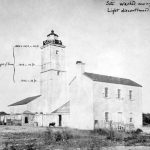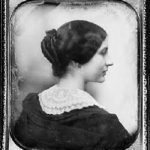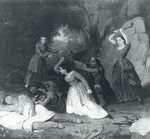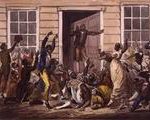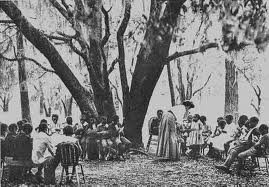Poet, Essayist and Independent Woman
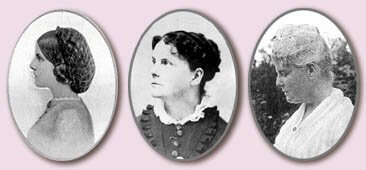 Image: Celia Thaxter at different stages of her life
Image: Celia Thaxter at different stages of her life
Credit: Seacoast New Hampshire
Known as the Island poet, Celia Laighton Thaxter lived much of her life on the Isles of Shoals, a group of nine islands six miles off the coast of Maine and New Hampshire. She wrote primarily of her life on White, Smuttynose and Appledore islands. The darling of literary Boston, she attracted some of New England’s great writers and artists to her family’s hotel on Appledore.
Early Years
Celia Laighton was born in Portsmouth, New Hampshire June 29, 1835. In 1839 her father Thomas Laighton was hired as lighthouse keeper on White Island, Isles of Shoals off the coast of New Hampshire. It was a lonely place for a child, and her younger brothers Oscar and Cedric were Celia’s only playmates. She wrote, “One of the first things a settler on the Isles of Shoals has to learn is to live as independently as possible.” But she soon grew to love the islands
Thomas Laighton and his brother Joseph jointly bought three islands that were part of the Isles of Shoals – Hog, Smuttynose and Malaga Islands. Eight years later, Thomas sold his share of the family holdings in Portsmouth and used the capital to build a summer hotel on Hog Island, which he renamed Appledore Island. Appledore House opened to the public June 15, 1848, one of the first resort hotels on the New England coast and a vacation spot for literary and artistic greats.
Marriage and Family
Celia Laighton (16) married Levi Thaxter (27) at Appledore House; they had two sons. Levi Thaxter had been Thomas Laighton’s partner in building the hotel; he had also tutored Celia and her brothers. The newlyweds moved to the mainland, residing first in Watertown, Massachusetts at a property his father owned. Moving from her childhood home on the islands was extremely difficult for Celia. She felt imprisoned in a city environment and longed for warmer weather so she could return to Appledore for the summer.
In 1854, the Thaxters accepted an offer from the Curzon family of Newburyport, Massachusetts and moved to the Mill House on the Artichoke River. Levi and Celia finally acquired a home of their own in 1856 near the Charles River at Newtonville, Massachusetts, probably given to them by Levi’s father. Today it is called the Celia Thaxter House.
Levi and Celia returned to Appledore for the birth of son Karl in June 1852, when Celia was barely seventeen. Karl’s birth was difficult, and he was apparently injured by a midwife during the delivery. All his life Karl walked with a limp, was extremely nervous, and had uncontrollable temper tantrums. He was very bright, but he could never live without his mother’s care. Son John was born in 1854, and Roland in 1858. Celia was very happy with her young family.
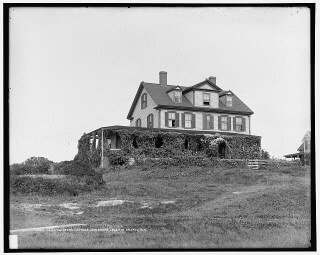 Image: Celia Thaxter Cottage at Appledore
Image: Celia Thaxter Cottage at Appledore
Isles of Shoals, New Hampshire
Credit: Library of Congress
In October 1858, Levi bought a summer cottage on Appledore Island, known thereafter as Celia Thaxter Cottage. Celia and the children spent summers at the cottage; sometimes with Levi as well. Celia created a 15-foot by 50-foot cutting garden of seasonal flowers for use in the hotel and the home. She planted flowers in raised beds and vines to shade the porch.
Levi believed his wife was over-protective of Karl, and after the birth of two younger sons (John and Roland), Levi devoted himself to them. When they were old enough, he took the boys on long trips to collect specimens of bird and animal life for museums.
Literary Career
Celia complained bitterly about her life in Newtonville, calling her home a “household jail.” In 1861, she secretly wrote a poem called Land-Locked which expressed her longing for her beloved islands. Levi took the poem without her knowledge to his friend James Russell Lowell, editor of Atlantic Monthly, who published it in the March 1861 edition; it was an immediate success and earned her $10.
Poets James and Annie Fields introduced Celia to the literary world, and she became famous as a poet of nature and the sea. Sandpiper (1862) was for decades her most anthologized poem. Among her best-known poems are The Burgomaster Gull, Milking, The Great White Owl, and The Kingfisher. Two books of her poems were also published, including Poems (1871).
During tourist season Celia served as hostess at Appledore House. She welcomed many New England literary and artistic figures to the island and her parlor. The list included writers Ralph Waldo Emerson, Nathaniel Hawthorne, Sarah Orne Jewett, Henry Wadsworth Longfellow, and John Greenleaf Whittier. Artists William Morris Hunt and Childe Hassam also vacationed there and produced several paintings of Celia and her garden, giving the island its reputation as an art colony.
During their stays at the Laightons’ popular resort, poets James Russell Lowell and John Greenleaf Whittier urged Celia to write, but her subjects and style differed greatly from those of other regional writers. She seldom wrote about people, but dealt chiefly with natural themes – the sea, rocks and flowers of her island home.
“You are not afraid,” artist William Morris Hunt told Celia, “therefore you will be able to do anything.” She was a genius at gardening, and during her years on the Island, she became a bird expert, an accomplished seamstress, and an excellent cook. She also held a salon each summer with poetry readings, storytelling, and music. Her hands were never idle.
Life with Levi
Celia’s life with Levi was not harmonious; she spent as much time on the islands as possible. An excerpt from an article in the December 1964 issue of the Colby Quarterly of Colby College in Waterville, Maine, entitled The Multicolored Spirit of Celia Thaxter, touches on the problems in her marriage:
Mrs. Thaxter makes no secret of the strain in her marital relations. Levi Thaxter, Harvard graduate, was in the mold of Hawthorne’s morose scholar-idealists. He consorted with men of eminence in literature, art and the sciences, and achieved such an impressive reputation as a reader of Browning that the poet wrote an eight-line epitaph which marks Levi’s stone in the Congregational Cemetery at Kittery Point.
… His chronic bad health, which necessitated periodic trips to warmer climates, and his aversion to riding a boat from the mainland to the Isles brought about many separations between them. His sardonic temperament was incompatible with her euphoric outlook, and he was impatient of any time she took off from household chores.
A curious ambivalence of pride and envy warps his view of her success. His feeling of superior intellect and his lack of solid accomplishment on his own rankled over the instant, effortless attention she attracted. He never shared her “proud astonishment” nor generously praised her endeavors. …
After Thomas Laighton died in 1866, Celia’s brothers Oscar and Cedric continued to run the family hotel, Appledore House. Celia regularly returned to the islands to care for her mother and to work as a hostess at the hotel during tourist season. The considerable fame she received for her poetry and prose never diminished her love of the islands, nature and her garden.
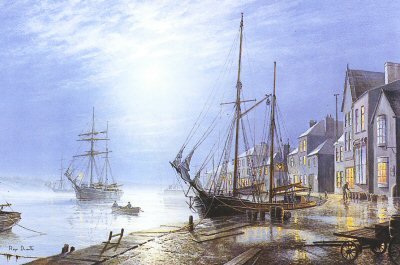 Image: Appledore by Moonlight by Roger Desoutter
Image: Appledore by Moonlight by Roger Desoutter
Extensive buildings of Appledore House Hotel
During the summer of 1867, Celia was helping at the hotel with Karl, while the younger boys stayed home with Levi. The following year, she took her first long winter visit at the Isles of Shoals, while Levi suffered from rheumatism on the mainland. She remained at the hotel for the summer, hostessing and helping out in the kitchen.
In February 1869, Levi had the first serious attack of an illness from which he suffered for the rest of his life. He called it rheumatism of the chest. The doctor advised him to go to a warmer climate, so in April Levi set out for Florida with John (13) and Roland (9), their books, camping gear, and guns to collect birds along the coast. Celia went to Appledore with Karl and continued her writing there. She spent most of the winter there for the next eight years, while Levi, John, and Roland were in Florida.
Celia began writing essays for the Atlantic, which critics considered to be of even more literary value than her verse. These essays were later published as Among the Isles of the Shoals (1873), which stimulated renewed interest in the Islands. With this, her most widely known book, she became one of America’s favorite authors in the late 19th century.
After a particularly successful season at Appledore House in the summer of 1870, Cedric and Oscar bought out part of the land on Appledore island that Celia had inherited from her father. She also loaned them $23,000 more to make improvements on the hotel. In fall of 1871, Levi was feeling better and decided to stay up north for the winter of 1872. Celia and Levi had some happy times together, fixing up their house, and going to cultural and social events in Boston.
Murder on Smuttynose
In 1873 Celia Thaxter and her family owned nearby Smuttynose Island and were renting a house there to Norwegian immigrants: John Hontvet and his wife Maren, Maren’s siblings Karen and Ivan Christiansen and his wife Anethe, who were newly married and had come from Norway the previous fall. The previous summer, the Norwegians had taken pity on a Prussian immigrant named Louis Wagner and invited him into their home as a houseguest.
John Hontvet and Ivan Christiansen ran a successful fishing business and when Louis was not ill from rheumatism and being nursed by the women, he help bait trawls in exchange for room and board. Six months earlier, Louis had moved to Portsmouth on the mainland, but he was doing poorly there, living hand to mouth assisting local fishermen when work was available. He constantly grumbled about his poverty and worn clothing.
In March 1873 Louis Wagner stole a boat and rowed to Smuttynose Island. Wagner knew John Hontvet would not be home that night because they had met in Portsmouth that day, and Wagner learned that the train delivering bait was late, forcing John to stay there until the bait arrived. John also told Louis he had saved $600 for a new boat.
Karen was sleeping in the kitchen near the warm stove, and she cried out when Wagner entered the house. In a panic, he hit her with a chair. He then killed Anethe outdoors with an ax as she tried to run away. Wagner returned to the kitchen and strangled Karen, but Maren escaped and hid in the rocks at the end of the island all night. Her bare feet were frozen, her nightgown bloody, as she clutched her dog Ringe for warmth.
The next morning – March 6, 1873 – she waved her skirt and shouted until she attracted the attention of the Ingebretson children playing outdoors at about 7 a.m. Mr. Ingebretson rowed the short distance to Smuttynose and brought Maren to Appledore, where Celia took the poor distraught girl in and cared for her.
Celia Thaxter was deeply shaken by these evil murders on property owned by her family. The senselessness of the killings was multiplied tenfold when it was discovered that Wagner only came for the money John Hontvet had saved, which was well hidden in a trunk. There was no sexual assault, no passion for killing, only to keep the women from identifying him as a thief. His take for two horrific murders was about $20 in a purse, three $5 bills and some coins. Among the coins was a button belonging to Karen Christiansen, which was later found in Wagner’s pocket.
Wagner was tried for the crimes, and Maren’s testimony convicted him, though he continually denied the crime. Wagner was hanged in Alfred, Maine two years later just before the state abolished the death penalty.
In summer of 1874, Celia’s new and enlarged volume of poetry went on the market. The Oceanic Hotel on nearby Star Island burned down. In January 1875, letters from Levi show that he was in Kingston, Jamaica. The Laighton brothers later bought the Oceanic Hotel, which had been rebuilt, for $100,000.
Eliza Laighton
As Eliza Laighton became increasingly ill, she became more and more dependent upon her daughter. Celia and Karl spent many months on Appledore during Mrs. Laighton’s final illness. Celia was exhausted from the work and depressed by the isolation of the Isles of Shoals during the winter, and she began painting on china during her long stays at Appledore. Levi spent the winter in Florida.
In 1877 she moved her mother to a house in Portsmouth. When she was not caring for her, Celia rode horseback around the countryside for two hours each day. While she sat at her mother’s bedside she continued painting on china. Eliza died in November 1877; Celia was inconsolable. After the death of their mother, Celia, Cedric and Oscar owned both the large hotel on Appledore and the Oceanic that survives today on Star Island, hosting as many as 600 visitors at a time.
In 1879, Celia, Levi and their sons spent the entire summer at Thaxter Cottage on Appledore to be with their friend, artist William Morris Hunt, who was deeply depressed and had decided to try to recuperate there. Unfortunately, before the summer was over, he committed suicide by drowning; Celia discovered his body. Driftwood, a new collection of Celia’s poems, was published.
To Kittery Point
In 1880, the Thaxters bought 186 acres along Seapoint Beach on Cutts Island at Kittery Point, Maine, for $9,000. There they built a Shingle Style cottage they named Champernowne Farm. Although it was never publicly announced, Celia and Levi began to live separately in 1880. They sold the Newtonville house and by 1881 Celia moved into the Kittery house with John and Karl and Levi moved in with his widowed sister Lucy Titcomb.
Levi Thaxter died of chronic peritonitis in 1884.
Late Years
In summer of 1886 and again in October Celia was very sick with what she referred to as neuralgia, and she suffered with several bouts of illness over the following years. When time and energy permitted, she continued to paint and write poetry.
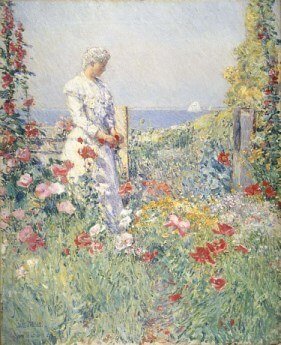 Image: Celia Thaxter in Her Garden (1892)
Image: Celia Thaxter in Her Garden (1892)
By Childe Hassam
Credit: Smithsonian Institution
In 1894 Celia published her most famous book, An Island Garden, which was illustrated by Childe Hassam. In it she describes her garden and its flowers in detail, referring to it as a cutting garden of old-fashioned flowers. Arrangements, in many small bottles and vases, filled her living room and decorated the hotel. The plants in her garden were not arranged by color scheme, but merely by height. She wrote:
As I work among my flowers, I find myself talking to them, reasoning and remonstrating with them, and adoring them as if they were human beings. Much laughter I provoke among my friends by so doing, but that is of no consequence. We are on such good terms, my flowers and I.
Celia Thaxter died suddenly August 25, 1894 on Appledore Island at age fifty-nine; she was buried not far from her cottage there. As per her wishes, her family and friends placed flowers from her garden around her coffin. A friend remarked, “We have seen the passing of a large and beneficent mind.”
SOURCES
Celia Thaxter Timeline
Wikipedia: Celia Thaxter
About Celia Thaxter’s Island Garden
Seacoast Women: Celia Laighton Thaxter
Colby Quarterly: The Multicolored Spirit of Celia Thaxter- PDF
